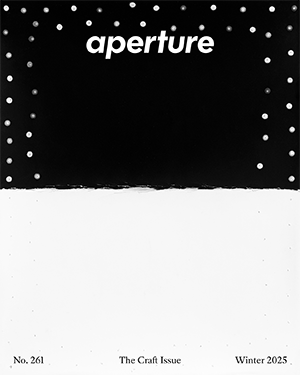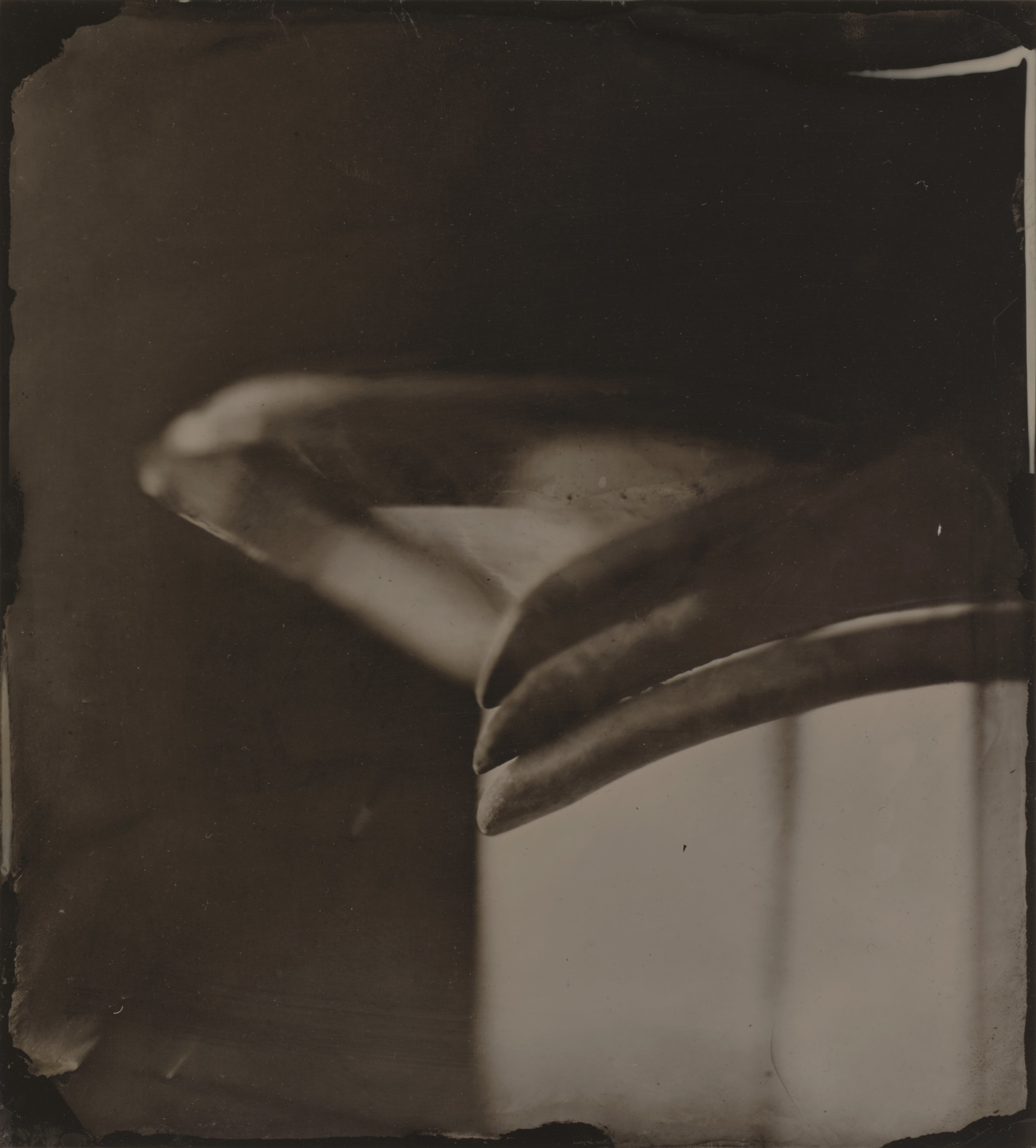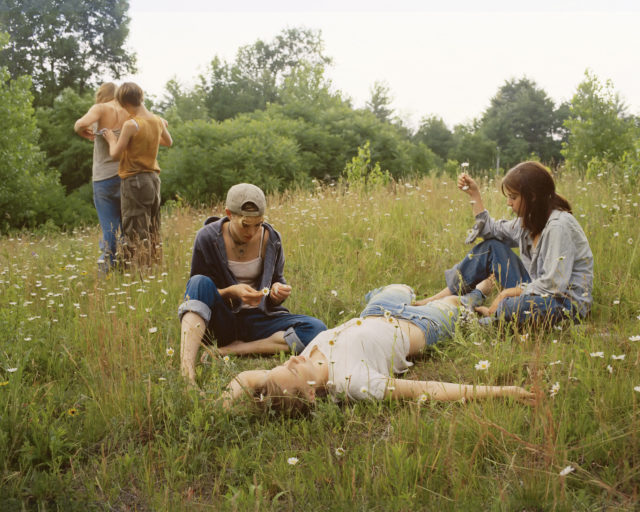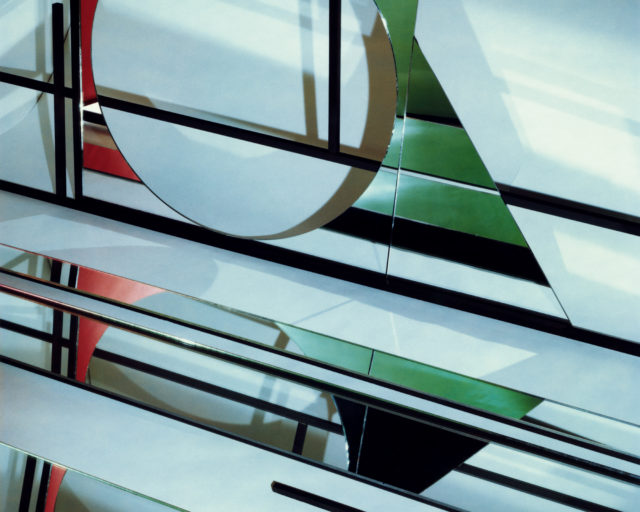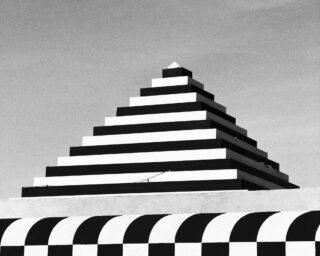Sally Mann, Tintype, Still Life #14, 2019. Photograph by Rob McKeever
To light, and then return—, an exhibition of photographs by Sally Mann and sculptures by Edmund de Waal at Gagosian’s bookstore gallery on Madison Avenue, is a formalist pas de deux between two old friends. The pair are also both Gagosian artists; they met after a third, Cy Twombly, gave Mann a copy of de Waal’s memoir, The Hare with Amber Eyes (2010). Perhaps nudged by their dealer (Gagosian previously paired Mann with Deana Lawson), each artist presents work specifically inspired by the other’s: Mann has produced gauzy still lifes of small, often indistinct objects, while de Waal, a self-described potter, has emphasized the pictorial presentation of his grisaille porcelain works.
Although the objects Mann photographs aren’t literally de Waal’s pieces, her compositions often hang on ambiguous, shadowy cylinders and paper-thin rectangles, echoing his vocabulary of forms. De Waal has composed groups of upright tubes roughly the size of candle holders, small sheets and blocks of various porcelains and metals, in wall-mounted shadowboxes or on plinths pushed to the wall to limit your view to a “front”—as if anticipating the sculptures’ lives as images.
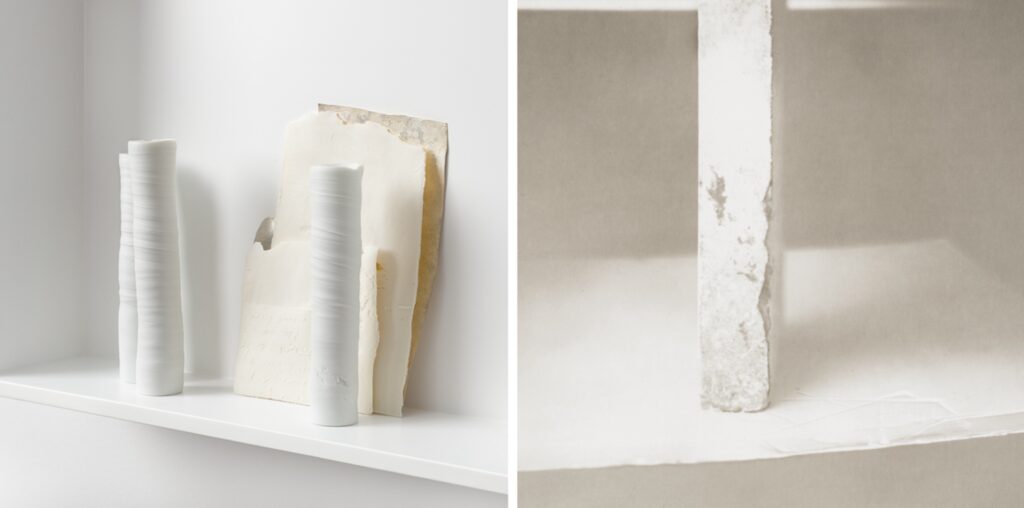
The two artists also echo one another materially. De Waal has incorporated slivers of platinum and silver, the elements that make Mann’s prints possible, into his arrangements (as well as Corten steel, the stuff of Richard Serra). Mann, through the positive tintype process, invokes a kind of sculptural imperfection: no two tintypes will ever be exactly alike, and where the collodion and silver nitrate have been unevenly applied, the images bear an extra layer of materiality—scratches, blotches, and blooms. Mann approached photo processes with the eye of an object maker; De Waal approached sculpture like an image maker.
For Mann’s part, a career of technical exploration manifests here in two distinct modes: eight still lifes are platinum prints, a remarkably detailed process; another eighteen are tintypes, dim and roughshod. Mann’s early portraits of her children (1984–1992) often used shallow depth of field to highlight details, a stain or a lock of hair, but the glass plate collodion process she employed beginning in 1997 can’t help but evoke death. If you don’t know already, you eventually learn that what looks like a simple wood or clearing or hill is a Civil War battlefield or a graveyard or a waystation for escaped enslaved people. As a reinvigoration of the genre of landscape photography, the misty necromancy of hand-coated negatives and, in the Blackwater series (2008–12), tintypes, is surprisingly effective for Mann’s gothic style of conceptualism.
Crudely speaking, these latest and most abstract, murky pictures of objects complete entwined career arcs of aging and abstraction, from childhood to the grave. Not that Mann is done making images—or objects—but she has moved through the search for subject matter into a search for space within the mediums that constitute classical photography. It almost doesn’t matter what objects Mann’s photographs depict—only that there are in fact objects, bits of marble or a cracked cup, light gilding a broken ring or a swooping edge, variegating the final composition.
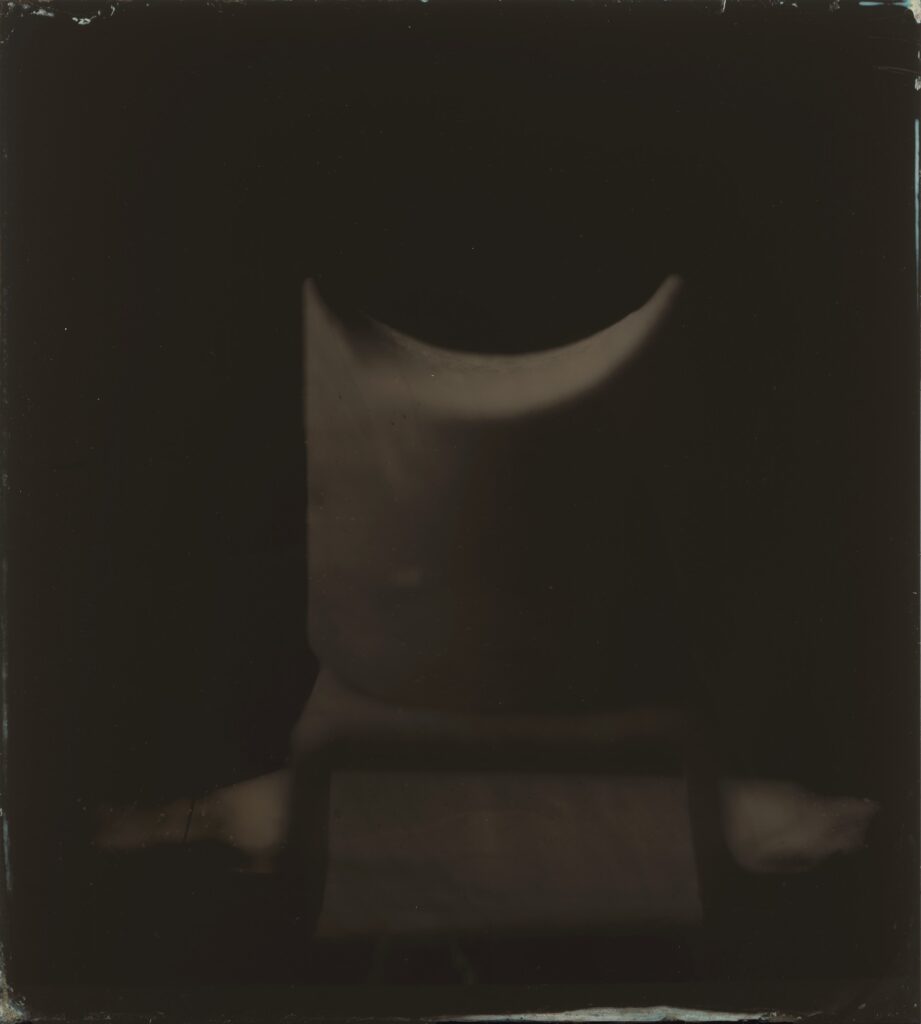

Similarly, de Waal’s frontal arrangements of deep gray ceramics and irregular ingots, with the occasional porcelain flash of white, use objects (actual, physical) to play within and accent a delimited palette. Earlier this year, these same walls exhibited silver and sepia-toned prints by filmmaker Bennett Miller, generated, in a nostalgic mode, entirely by AI.
The tintype process Mann employs, like the glass plate negatives she turned to in the 1990s, has not changed much since the 19th century—and carries its own leaden nostalgia. Many lesser artists have been seduced by “alt process,” where a kind of imprecise, hand-done, even “painterly” mode of printing or making photographs (doing them badly) promises to transform a boring subject into fine art. Mann, obviously, knows what she’s doing. These tintypes are masterful formal studies, sometimes gently pictorial and sometimes washed free of depiction. Most are printed darkly, sometimes to the point of abstraction, and while they are nominally indexical the emphasis falls on their imprecision and mystery. The “flaws” of an unpredictable process add ripples to sometimes bleak and blocky pictures.
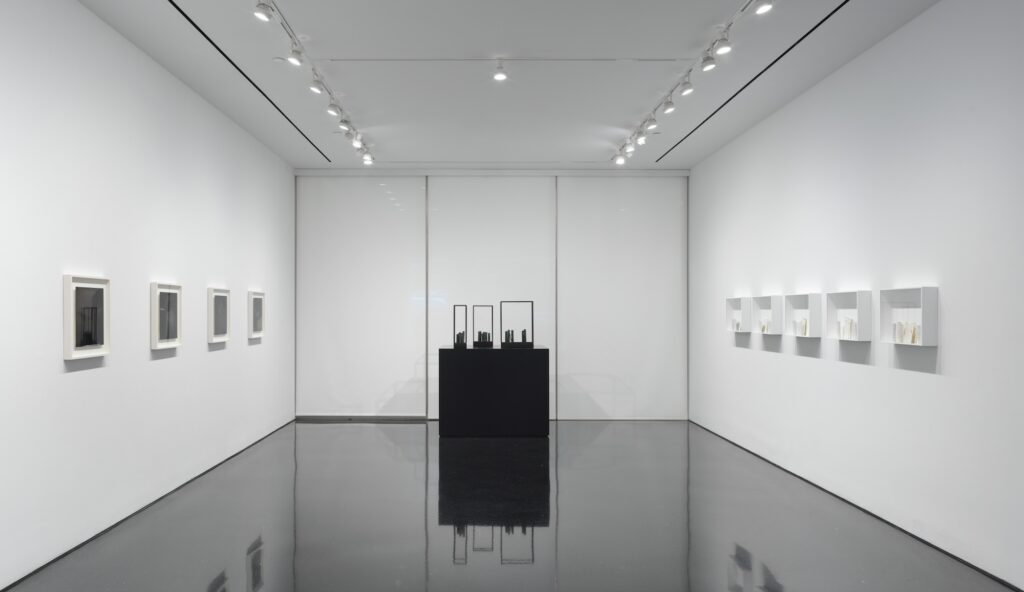
The abstractions of Mann’s battlefield photos rely on the realization of what they depict—mood only takes you so far—and it’s safe to say that the de Waal–inspired still lifes also benefit from a nod to the friendship that occasioned them. And perhaps it’s de Waal’s stark formalism that pushed the present tintypes to a level of abstraction that exceeds this biographical (historical) underpinning to emphasize process above all. In this sense, more than photos of objects, they are objects themselves.
The platinum prints, meanwhile, are pale, delicate, reveling in high-contrast arrangements of scuffed, off-white forms, often bits of gravestones. In one, a square column rests on a thick sheet of white material; another, particularly finely wrought, centers a dark, brightly striated obelisk. Many of them include what seems to be paper with torn or deckled edges: a particularly elegant work shows a smudged scrap of material leaning against a larger scrap, cropped in a way that flips between micro and macro, two bits of stationary or two chunks of wall. This, too, is a modernist approach to process, since platinum prints are prized for the way the grain lays directly on the substrate (unlike silver gelatin, there’s no gel), and for its subtle tonal range. Again, Mann is depicting the way the medium depicts.

All photographs © the artists and courtesy Gagosian
The formal correspondences in the two bodies of work (vertical form here, vertical form there; the recurrence of paper-like forms) stand for the formal correspondence between two friends. There is another degree of correspondence: Several of de Waal’s shadowboxes include slivers of porcelain covered with raised handwriting, apparently a reference to the Emily Dickinson poem that gives the show its title. Again, the backstory is sentimental: the poet wrote these verses on a torn envelope.
to light, and then return—is on view at Gagosian, New York, through October 28, 2023.
